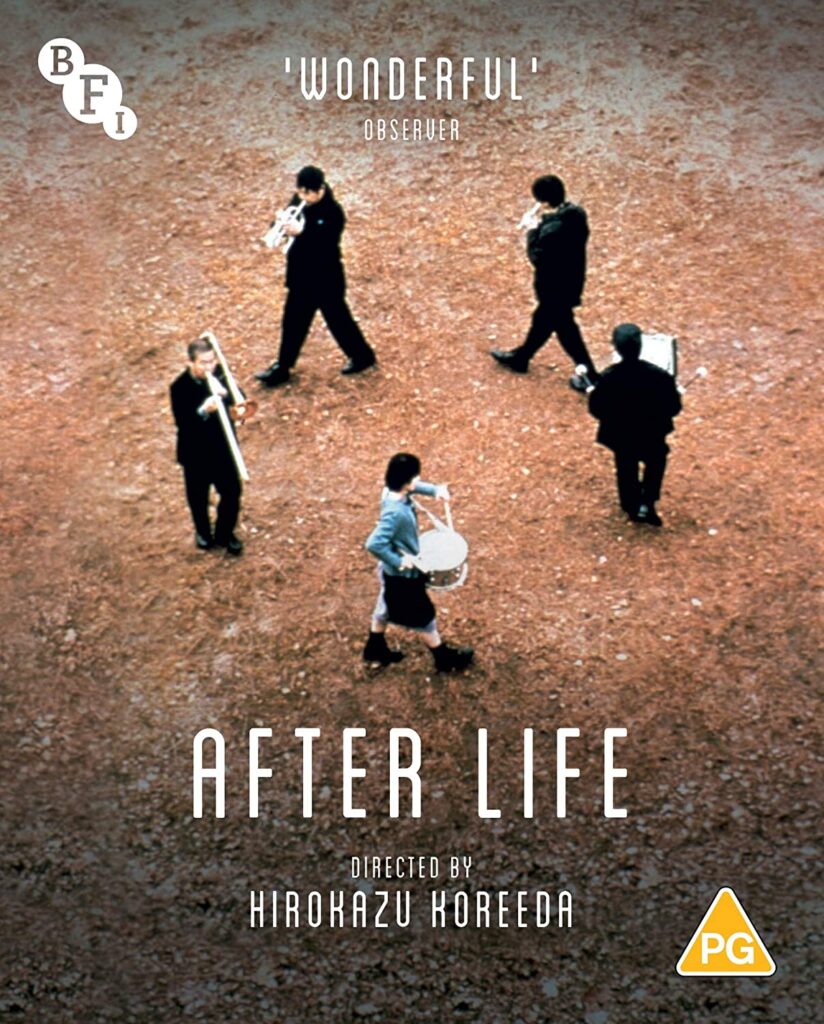Hirokazu Koreeda’s After Life

Sandeep Raveendranath
2005 EC
What would you choose if you had to pick only one memory from your life to live with for eternity?The film, After Life, directed by Hirokazu Koreeda addresses this question. It is a poignant meditation on life, its meaning, on human relationships, memories and its nature, painted with warm, compassionate brush strokes. The film is set in a waystation for recently deceased souls passing through to the afterlife. Right after death, they arrive at this waystation where they pick one memory from their life, which they get to live with, for eternity. The staff at this waystation are those souls who weren’t able to pick a memory and is therefore assigned to work at many facilities like this waystation until they are able to do so.
Striking similarities with the theme of Apichatpong Weerasethakul’s Uncle Boonmee Who Can Recall His Past Lives, After Life is also about reincarnating memories. Once the arrivals at the facility pick a memory, the staff recreates it by shooting a film of that memory using standard cinematic tools. The person whose memory it is, watches this film and having relived that memory graduates from the waystation to the afterlife. In the process of recreating the memories, the film plays with the notion of cinema as a “re-presentational” art. How can the wings on a plane be made to look a certain way, how can clouds be made to look like tufts of cotton candy or the heat inside a tram be recreated? What do symbols mean? Does the chicken rice represent the woman’s affection for her brother? These are all questions every filmmaker goes through while trying to translate the story on a script-page to the visuals on a screen.

During the course of the week that the film spends at the waystation, the audience is guided through the lives of the arrivals. There is an old man who recounts a memory of being captured by American troops at the end of the Second World War and being offered a bowl of rice. There is an old woman whose favorite memory is of a red dress she had as a young girl and the time she spent with her brother. There is a a pilot who cherishes his memory of flying through the clouds. As the end of the week approaches, only two individuals, Watanabe and Iseya are unable to pick a memory. Watanabe is conflicted by the idea of how ordinary his life was and the 21 year old Iseya obstinately refuses to pick a memory because he believes that not picking a memory is the way to take responsibility for his life. Watanabe finally picks a memory making it through just in time while Iseya becomes a staff at the waystation. In a moment of afterlife perfidy, one of the workers at the waystation Takashi, realizes that Watanabe’s wife was his fiancée before he died and that it was a moment with Takashi that Watanabe’s wife had chosen as her eternal memory. Takashi, finally having relived that same memory with Watanabe’s wife, is released from his work at the waystation and passes on to the afterlife.
The recounting of these memories is shot in a documentary style through interviews with the arrivals. While some of the interviews with the main actors seem scripted, others are with non-actors who are in fact recounting experiences from their own lives which gives the narrative a breath of authenticity. The rest of the film unfolds as a fictional piece navigating through the mechanism of processing these deceased souls and weaving in the personal stories of the staff at the waystation. Irrespective of whether the storytelling devices employed are fictional or nonfictional, there is no mistaking that at the end of it, After life is a film that ponders about the question of life as a sum of its memories and the human relationships that create those memories.













